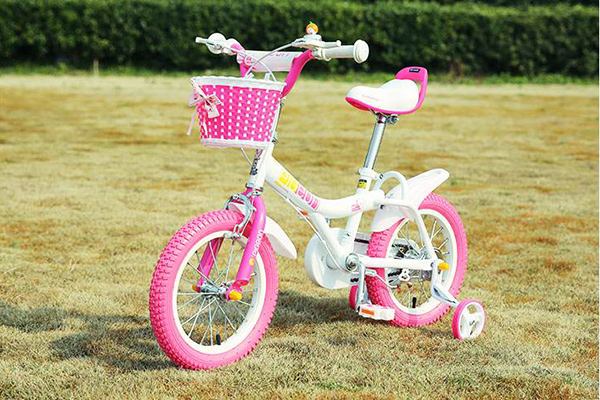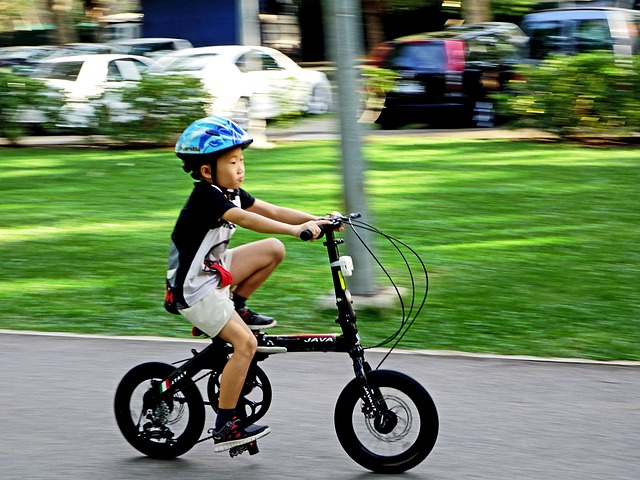A kid’s life can reach a critical turning point when they learn how to ride a bike. However, you must first locate the ideal size bike for them before locking in the training wheels and fastening their helmet. What size bike for a 5 year old? Large or small bikes might be challenging to control and maneuver. So knowing what size bike to buy might be quite important to a child’s experience. Use this guide to understand the specifics of children’s bike sizing.
Table of Contents
Sizes Of Children’s Bikes
Balance bikes have wheels that are 12″ in diameter, and teenage models have wheels that are 26″ in diameter. Kid’s bikes are available in a variety of sizes to accommodate growing youngsters because the right bike size is essential for safety and comfort. Within that range, the most popular wheel sizes are 12, 16, 20, and 24″. Although they can be more difficult to find, several brands produce bicycles with wheel diameters that fall between those common sizes.
5 year olds usually fit well on bikes with 14″ or 16″ wheels. The majority of those-sized machines will have a straightforward set-up with a single gear and a coaster or rim brake. This keeps the bike lightweight and maneuverable for little riders.
Safety First: Correct Sizing & Its Significance
As young cyclists hone their skills and fall in love with the sport, kid’s bikes are made to give them confidence. Your child can pedal comfortably and get on and off the bike safely with the proper-sized bike. Larger bikes can make it more difficult to quickly dismount in the event of a sudden stop, which can result in falling. A rider who rides a bike that is too small may feel crowded and inconvenient.

How To Choose What Size Bike For A 5 Year Old?
Measure The Child’s Inner Seam
The secret to making sure you find the right size is to use the leg inseam length. Height is a good measure to approximate the size of the bike, but it does not represent how the bike feels when pedaling.
The inleg seam, or vertical distance from the ground to the crotch, is directly related to the distance between the bike seat and the pedals (where our legs go). Having a bike that fits our body is very important for efficient and comfortable riding. See the following brief instructions on how to calculate the child’s inner seam:
Have them stand up straight with their backs against the wall, put their shoes on, and keep their feet together
They can hold a book between their legs with the spine facing up and touching the crotch
Keep the book level and mark where the book meets the wall
The vertical distance from the floor to the spine is the inner leg seam!
Measure The Child’s Height
Have your child stand with her back to the wall, no shoes on, and her feet slightly apart from shoulder-width. Measure the distance between the ground and the top of her head using a yardstick or measuring tape. Decide whether to measure the outcome in inches or millimeters.
Maturity and Ability
Every person, including your child, is an individual who is special. Parents do believe that, and they are correct in doing so. As proud people, parents can mistakenly think that their kids are older than they actually are. And that might be harmful. The truth is that your child might not be prepared, in terms of maturity or physical ability, to move up to a bigger bike, regardless of age, height, or what a kids bike size chart says.
That’s not exactly true, though. Your child may have reached a height where she is ready for a bike with larger wheels, but she is not yet mature enough to handle the more advanced features, like hand brakes, that are typically found on larger bike models.
So how do you evaluate your child’s cycling skills when they get a new bike? No one knows your child better than you do, and you are aware of how she performs in comparison to children her age. In other words, you probably have a good sense of where your child is developmentally and in terms of coordination. For starters, trust that instinct. She will ride with you for a test drive before you make a purchase.

Run & Test
While a height chart is a good starting point, a test drive can greatly help your child choose the right size bike. To ensure a snug fit, there are a few things to keep in mind when testing your bike:
Sit down – When your child sits on the seat of the bike, the soles of their feet should be comfortably touching the ground. Otherwise, the seat height is too high and may make parking more difficult.
Leveling pedals – There are two potential problems that can occur if the bike is incorrectly sized when pedaling. First, your child’s knee hits the handlebars. This is a sign that the bike is too small. By contrast, if your child can’t pedal smoothly and appears to have hyperextended legs, the bike is too big.
Set the bar – Standing up, your child should be able to step across the middle bar of the bike with both feet flat on the ground. For a bike of the correct size, there should be a gap of 1 “to 2”. If the bike has to lean to fit under a child’s leg, it’s too big.
Handle with care – Your child should be able to comfortably drive the handlebars while bending the arms only slightly. If they overstretch, it could be another sign that the bike you see is too big.
Read about:
What To Do If Your Child Is In Between Bike Sizes?
The purpose of bike size charts is to quickly offer recommendations, but they can’t always be trusted to be accurate. Sometimes children’s measurements put them exactly in the middle of the two recommended bike sizes. Which bike should a five-year-old who is 3’7″ tall choose between riding a 14″ and a 16″ bike, for instance?
If children in the middle sizes feel comfortable riding bikes and have good balance, they can advance to the bigger bike category. Children continue to grow, unlike adults. For young riders with experience, a slightly larger bike can be a fun challenge and prevent them from outgrowing their new bike too quickly.
Where to Shop Bikes
Sports and toy shops, big box stores, and discount warehouses are your options. Your local bike shop might, however, be your best bet. You are most likely to find an expert and seasoned salesperson there. To choose the best bike, professional advice is crucial. A bike shop is probably the best place to get help with other problems like assembly and maintenance. This is not to say that you cannot find good advice and services elsewhere. However, it’s best to switch to a different store if you’re uncomfortable with the level of expertise provided at one.

Frequently Asked Questions
What Age is a 16 Inch Bike For?
Suitable for 4-6 years of age: 16-inch wheels.
16-inch wheel bikes usually have aluminium or steel frames, v-brakes, and a single speed drivetrain. To provide more stopping power, some higher-end models may come equipped with disc brakes. The standover height of these bikes is low.
Is a 16 Inch Bike Too Big for a 5 Year Old?
A bike with 14 or 16-inch wheels will be suitable for riders that are 5 to 6 years old and of average height (42.5″ – 45.5″). A bike with an 18-inch frame may be necessary if your child is taller than average. Or they might need a 12-inch bike if they are shorter than average in height.
Is a 16 Inch Bike Good for a 5 Year Old?
A 16 inch bike is generally the best fit to purchase for 4 and 5-year-olds. A 20-inch bike should also be taken into consideration if your 5-year-old is particularly tall to give them more room to grow. There is a huge variety of seat heights available for wheels with a diameter of 16 inches.
Is An 18 Inch Bike Good for a 5 Year Old?
5-8 Years. As kids grow up and their confidence, skill, and sense of adventure grow, they can move to the larger 14 – 18-inch wheels. At this age, children’s bikes begin to feel and look more like adult bicycles.
Is a 20-inch Bike Too Big for a 5 Year Old?
Depending on your child’s height and inseam measurements, a 20″ bike may be too large. Some 5-year-olds are tall enough to fit this bigger size, but 14″ and 16″ models are more common for that age. If your child is a confident rider, they might feel comfortable moving up to a 20″ bike which can go faster and be a bike to continue growing into. For more detailed advice, refer to the bike size chart above.
Which Bicycle is Best for a 5 Year Old?
The ideal bicycle for a particular rider depends on their riding requirements and preferences. The most crucial aspect is choosing the proper size so your child can pedal safely and comfortably. Think about whether you would prefer a bicycle with rim brakes that you engage with a hand lever or a coaster (back-pedal) brake. Most toys for children under five won’t have gears. See our article on the top children’s bikes available right now.
Should a 5 Year Old Be Able to Ride a Bike?
To learn to ride a bike, there is no appropriate or inappropriate age. While some people learn on balance bikes as toddlers, others begin their education as adults! The average age at which children begin riding a bike is between 3 and 7 years old. Some kids learn to ride balanced bikes right away, while others wait until they have more developed motor skills and confidence before they try two-wheelers.
Conclusion
It’s crucial to get the proper size bike for youngsters when they are ready to begin learning to ride a bike. It can be challenging to decide when it’s time for an update for kids because they outgrow their current bikes on a regular basis. This comprehensive guide provides you with all the advice you need to determine your 5-year-old biker’s proper size.
Thank you for reading. If you have any questions, please leave a comment.



![Trek Verve 3 Review In 2022 Pros & Cons [Updated]](https://www.bikeyourbest.com/wp-content/uploads/2022/09/Trek-Verve-3-Review-In-2022-Pros-Cons-Updated-300x185.jpg)